Pina Bausch’s Rite of Spring comes to the Adelaide Festival
The first performance provoked a riot. Now a remarkable collaboration brings together Stravinsky’s music, Pina Bausch’s choreography, and dancers from 14 African countries.
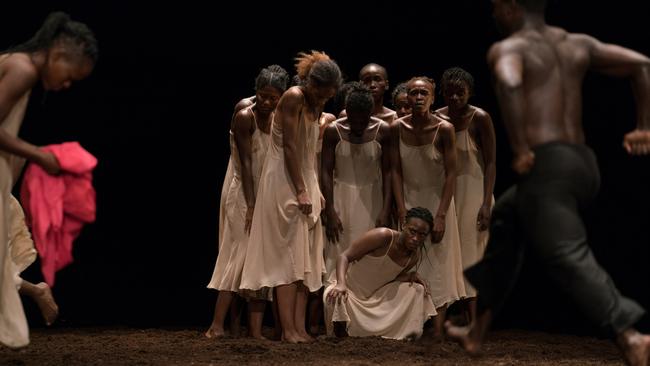
The first performance of Le Sacre du Printemps – The Rite of Spring – in Paris in 1913 famously provoked a riot. Its thumping orchestral score and frenzied choreography made it one of the most notorious premieres in history, a succes de scandale. More than a century on, the music still packs a punch – but it’s hard to get excited these days about obscure Russian folklore and virgin sacrifice as entertainment.
Prepare to be astonished. In a project involving Stravinsky’s celebrated score, the choreographic genius of Pina Bausch, and a pioneering dance school in Senegal, The Rite of Spring has been reborn in a remarkable new production.
Dancers from 14 African nations – including Togo, South Africa and Ghana – have been selected to dance Bausch’s carefully controlled explosion of contemporary choreography. Few had any training in modern dance technique, let alone classical ballet. Over two separate rehearsal periods, mid-pandemic, they were taught the steps of Bausch’s version of The Rite of Spring. They first went on stage for the belated premiere in Madrid last September, and they’re coming to the Adelaide Festival next month.
Video footage gives an idea of what to expect. Bausch’s Rite does not disguise the dancers’ bodies and physicality. As befits a pagan ritual, the movement is brutal, with stamping feet on the soil-covered stage, and violent, stabbing motions to the guts. The groups of male and female dancers come together as if magnetised and then fling apart again. Chests heave with audible panting. Bodies glisten with sweat. It’s explosive, visceral, sexy.
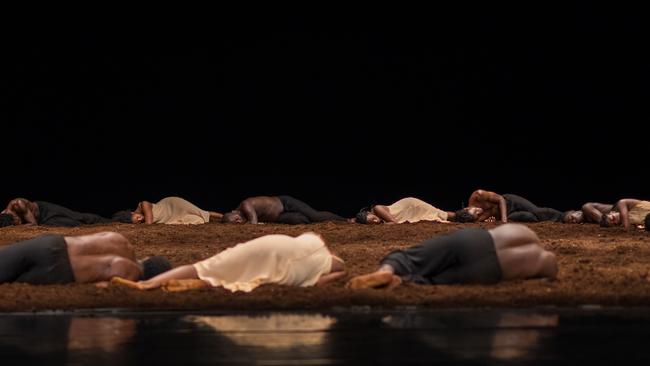
Josephine Ann Endicott, an Australian-born dancer and a foundation member of Bausch’s company, has been working with the African dancers in their preparations for the Rite. On a Zoom call from her home in Germany, she can hardly contain her excitement about it. Her laptop shakes as she bounces in her chair.
“Just wait until you see it, you will understand when you see those bodies,” she says. “I haven’t seen a Sacre that felt so real and pure. We finally had the premiere in Madrid in September, and I could hardly sit still.”
The Rite of Spring brings together two extraordinary personalities from the world of dance. Bausch founded her company Tanztheater Wuppertal Pina Bausch in 1973, and tanztheater, or dance theatre, has since become a byword for her style of emotionally exposed, utterly committed performance. Bausch’s version of the Rite – known by its German title, Das Fruhlingsopfer – was first seen in 1975 and has been in the company’s repertoire ever since.
Endicott danced with the Australian Ballet in the early ’70s and then travelled to London, where she met Bausch. She joined Bausch’s nascent company and was in the original cast of the Rite, later taking on the solo part of the sacrificial victim, the Chosen One. Bausch was a demanding personality – “None of those choreographers are easy people,” she says – but dancing the Rite was a thrill like no other.
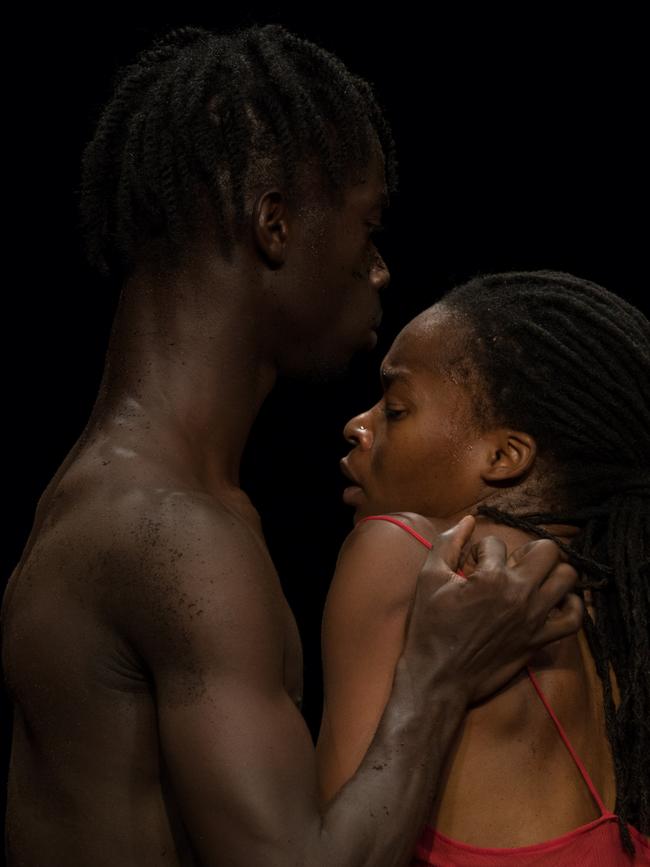
“She understood the music so instinctively,” Endicott says. “It was a long process to find what she really wanted to do movement wise. But the underlying theme of the music and the ritual is all in there. I think it is a perfect Sacre, perfectly choreographed. With Stravinsky, the combination is just a bomb, an explosion.”
The piece demands body and soul from the dancers, especially from the female soloist who is the Chosen One.
“It’s only 35 minutes but you are forced to give everything, especially if you have to dance the three-minute solo,” she says. “It’s very daring, but you feel exhilarated after a Sacre performance. An unforgettable experience … You feel every single bone in your body kind of cracking – in a good way.”
Bausch died in 2009, and had never worked with Senegal’s Ecole des Sables, the School of the Sands, founded in 1998 by French-trained teacher and choreographer Germaine Acogny. The school, about 50km southeast of Dakar, has two main studios: one with a western-style dance floor, and the other with sand.
Through connections between the African school and the Pina Bausch Foundation, chaired by Bausch’s son Salomon Bausch, came the idea of a collaboration based on the Rite.
Endicott recalls telling Salomon, without hesitation: “Pina would love the idea. Let’s do it.”
Endicott travelled with Salomon Bausch to Senegal for a workshop at the Ecole des Sables. She admits she had some reservations. The dancers were not trained in western-style technique, like the hyper-pliable dancers found in the ballet and dance studios of Europe; their experience was in popular styles such as hip hop, and in the traditional dance of their respective countries. Endicott was worried they may not meet the exacting demands of a performance of the Rite.
“African-born women have rather flat feet,” she says. “It’s because they are always in the ground, they feel the connection to their ancestors. In the beginning, I thought this may be a problem for Sacre, because we need stretch feet. But I was so convinced by what they were giving me that after a while, I didn’t see their feet – it just didn’t bother me any more, because everything else was so pure and overwhelming.”
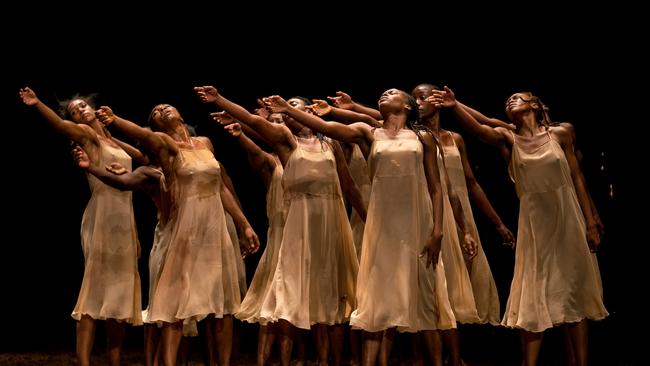
The selected dancers were not students of the Ecole des Sables but had come from 14 different African countries. Working with them was a significant departure for the Pina Bausch Foundation for several reasons. Until recently, Bausch’s work had been danced almost exclusively by her company. Since 2016, other companies including English National Ballet and Bavarian State Ballet have been granted permission to perform her work. (Endicott says she once made overtures, unsuccessfully, to the Australian Ballet about staging Bausch’s Rite.) Those European companies are well established ensembles; the difference with the African project is that the dancers were coming together for the first time.
The pandemic interrupted rehearsals and plans for a first performance in Senegal in 2020. Last August, after a gap of more than a year, dancers assembled again at the Ecole des Sables, with Endicott and another former member of Tanztheater Wuppertal, Jorge Puerta Armenta, putting the dancers through their paces.
Both Endicott and Armenta have previously worked with unskilled or non-professional dancers. Armenta, who is Colombian, has run dance projects with young people from disadvantaged backgrounds. Endicott has led groups of teenagers and seniors for performances of Bausch’s Kontakthof. In those pieces, she says, she is less interested in flawless technique than in the humanity a dancer can bring to a performance, with all their imperfections.
But teaching mature dancers an entirely foreign technique for a professional, touring production of a major work by a revered choreographer – and with only two rehearsal periods of roughly six weeks each – was like teaching them another language.
“We were teaching them Chinese,” Armenta says. “They are people who know how to dance, to move their bodies, but it was another language.
“Most of them don’t come from western techniques – classical or European techniques. They are coming from urban dance and traditional dance. And young people in Africa are mixing up a lot of traditional dance and urban dance.”
The choreography was broken down into the dance equivalent of syllables and then pieced together again.
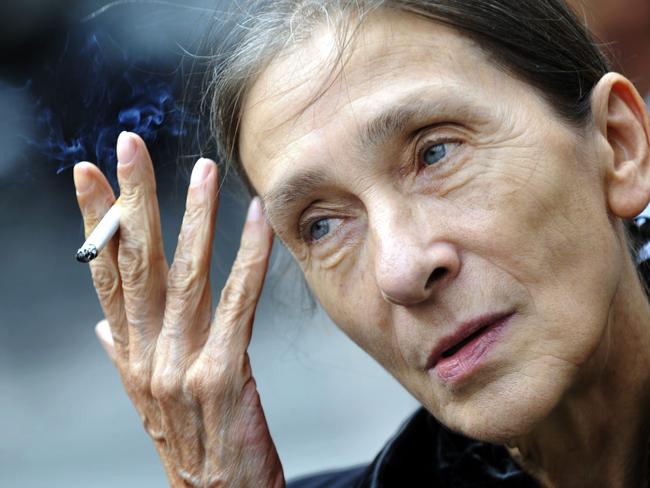
“Some of these things, they were able to catch it, but other moves were more complex or unusual for them,” Armenta adds. “It is a process that has to be slow, and very repetitive. But at the same time, something was very magical – the hunger of wanting to get it. And they approached things with a very pure movement … They know how to move their bodies, they know how to approach a movement, they know something of how to work – but in terms of language it was completely different, and it was very interesting to have this experience.”
From the women in the group, Endicott says, a few were selected as soloists who would each play the role of the Chosen One.
“I would watch and try to imagine which ones are feeling at home in their movements, and which ones are shining like diamonds – which ones interest me most,” she says. “There were one or two girls where I thought, ‘Let’s go with them.’ And along the way, it was work, but they are gorgeous in the solo – they are so gorgeous. Now we have four soloists that do it, the Chosen One.”
A company of all-African dancers performing The Rite of Spring can give the viewer pause. The Rite is, of course, a key moment in European modernism: Stravinsky’s exciting, violent score, and the drama of a pagan ritual, are of a piece with the early 20th-century vogue for primitivism. In the visual arts, the same can be seen in sculpture and paintings by Gauguin and Picasso.
So how is a contemporary audience, alert to racial stereotypes and the history of colonisation in Africa, meant to understand this Rite, performed by dancers of colour?
“You are sitting there, the public, and you have only black people in front of you … Why?” Armenta says. “What are they saying about it? Is there a statement behind it? It is choreography from European culture, coming to Africa – all these questions, of course they are coming up.”
Germaine Acogny, of the Ecole des Sables, says she immediately identified a thematic connection between the Stravinsky/Bausch Rite – she first saw it performed by the Paris Opera Ballet – and the practice of African spiritual beliefs: “I recognised my own culture within it.” Endicott adds that the African dancers lend the Rite a new kind of authenticity, bringing to the performance a feeling for their own heritage.
“It’s all part of their tradition,” she says. “They build a circle often, and they pray or chant or are reminded of their ancestors. It makes the piece even stronger than it has ever been … “I am full of admiration. Just wait until you see it, you will understand.”
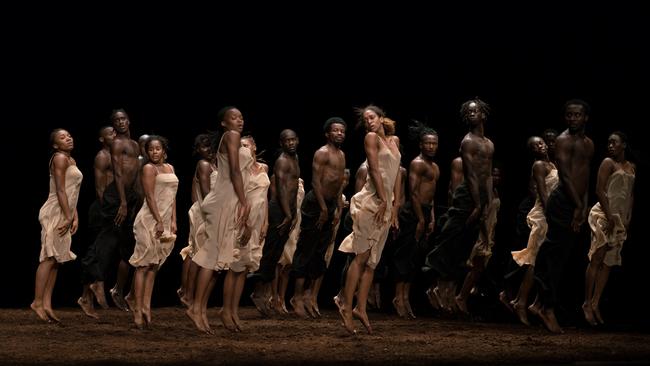
A companion piece to the Rite is a duet called Common Ground[s], danced by Acogny and Malou Airaudo, a former member of Bausch’s company. Their duet is offered as a counterpoint to the Rite’s violence: a tender meditation on their roles as grandmothers, mothers, daughters and matriarchs. Sadler’s Wells, the dance theatre in London, is the production partner in the double bill.
Endicott has lived in Germany for decades and speaks with accented English, but she still regards herself as Australian: “I eat Vegemite almost every morning on my toast,” she says.
She regrets she is not able to travel to the Adelaide Festival because of her commitments to remounting another of Bausch’s pieces. But she is certain that local audiences will be amazed by a dance that she describes as untamed, raw, unplugged, exciting, electrifying. “I haven’t seen a Sacre that felt so real and pure,” she says. “This is it.”
The Rite of Spring/Common Ground[s] is at Her Majesty’s Theatre, Adelaide, March 4-6.
